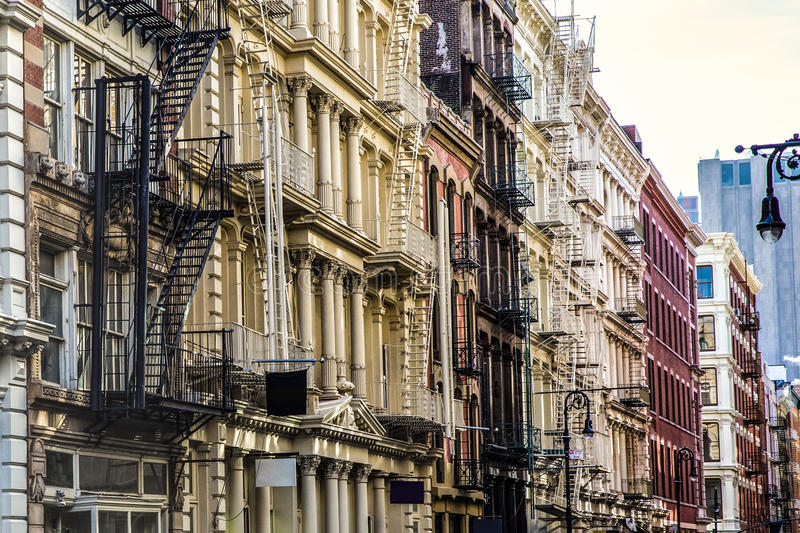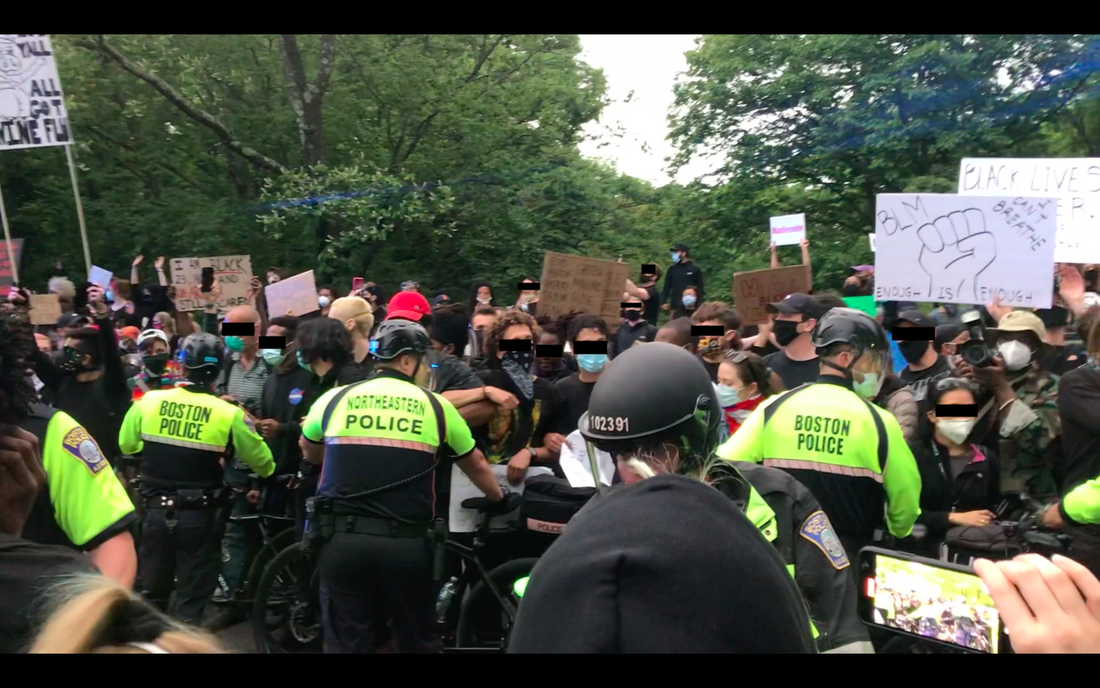|
By John J King / @JRexPlays
So, you’ve decided to take the leap and move to the Big City! There has never been a better time to move to New York: 2020 brings many changes, including the best traffic and parking in memory! And with the well-heeled hordes making an exodus, the chances of finding the perfect place – for a bargain – are sky-high. But who knows how long the pandemic will last? So, finding the best location is paramount. When picking the perfect apartment to serve as your city foothold – and office, social center, weekend getaway, place to eat takeout, and the only location you can safely be for the cold winter months – consider the following: How close is the nearest public transportation you won’t be using due to a mix of fear and unemployment? You’ll want something within walking distance, otherwise your friends won’t even lie about coming over for socially distant visits in some ambiguous future. Surround yourself with culture, food, and nightlife. Nothing says “desirable neighborhood” like great restaurants with frigid outdoor seating, and living close to cafes you don’t feel safe going to is a great way to maintain that desire. The possibility that these chic eateries may go out of business before you feel safe in public adds a pinch of spice to the yearning. Does the neighborhood have good schools? Sure, you don’t have kids – yet! – but you’ll want educated children nearby who can read the distress-signs you put in your window. Finding all of these in the same area will save you money. Because in 2021, when the pandemic lifts – so will the rents! And as you move to a one bedroom with three roommates in the Bronx, you’ll be saving! Once you narrow your scope to the neighborhood of your pre-COVID dreams, peruse the listings. This time of transition is a renter’s market, but that won’t keep charlatans from running scams. To avoid becoming a gullible greenhorn, follow these tips: Only consider apartments with legitimate photos and addresses. Did the real estate agent choreograph their tour video to Dua Lipa? No? Do they even want a new tenant? Ask friends in the city to tour properties for you. First, this will ensure a listing is legitimate. But it also feels like hanging out, as you listen to their comments on such topics as: tile coloring, unique odors, “your vibe,” and their personal version of a “roach potential” spectrum. Even after weeding out the conmen pretending to be landlord Pastors in Astoria, you’ll find no shortage of very real, nearly affordable units, so you’ll need to narrow it down to the flat made for you. Some things to mull over: Does the building have laundry? You don’t want to be one of those Gen X’ers who dies from getting COVID in a laundromat. Will you have a fire escape? Crucial to safe city living, fire escapes add a unique outdoors space, essential during lockdown. Does your block have ongoing construction? Lucky you! Cat-calls are the only social contact you’ll have until spring. Will your lease allow you to have a dog? You don’t have a dog and you’re not getting one in this economy! But renting a dog-friendly apartment is like renting Hope. You can almost scratch Hope’s belly. And Hope won’t die suddenly, like your last dog, Hope. Lastly, your move to the Big City calls for self-reinvention: a new life, a clean slate. It already feels like you’re drowning, so why not take the plunge into an exciting competitive job market? But you need to stand out, so find creative ways to present yourself. You work in theatre? No: you specialize in post-event-world non-digital communications, with a deep background in innovative Zoom-space creation. You often take pictures and videos of your wife to post on Instagram. Or, in pandemi-conomy terms, you specialize in generating digital content for niche brands. You graduated from an acclaimed university with a degree in English, or: you are willing to take any job in which day to day tasks include “using words.” New York City has always welcomed newcomers ready to hustle, so take the leap! And we’ll all find out together whether this was a jump into your future, or a hop from one sinking ship to the next. Welcome!
0 Comments
With Virtual Theatre on the Rise, Artistic Director Gets Creative to Excuse Lack of Diverse Casting.10/21/2020 BOSTON, Mass. – With Zoom performances eliminating the need to cast from the limited pool of local actors, Boston Stage Artistic Director Michael DuBarry led his staff in an hours-long session to brainstorm how not to hire actors of color for their upcoming virtual production of Into The Woods.
“With a cast this big, we really had to push ourselves,” says DuBarry. “Boston Stage audiences come not only for predominantly white casts, authors, and creative teams, but for well-constructed arguments as to why we continue to cast white actors in a city as diverse as Boston.” With other local theaters hiring artists of color from the nation’s most segregated city, and casting a broader net for national talent, DuBarry wanted to rise to the challenge. “We don’t want a lynch mob after us.” Blanche Zimmerman, the Artistic Associate overseeing casting, took on the bulk of the project. “We got headshots from great actors of color from all over the country, and it was sad to have to ignore them,” says Blanche. “We did cast Christina Lansbury out of Seattle, as the Baker’s White, I mean, Wife. I’m sending her some Red Sox swag to decorate her background so she seems like a local white actor.” Blanche excused herself for a meeting with her intern to discuss the timing of emails informing Broadway actors of color that their headshots had somehow gone to spam. One lucky local actress of color did land a role: Solange Cobb, born and raised in Mattapan to Haitian immigrants, plays the Witch. “I didn’t want to play the witch,” she scowled. “I swore to myself after a fringe production of The Crucible that I’d never let another white company cast me as a witch. But I haven’t worked with Boston Stage, and I wanted to get a foot in the door. Turn down a role? In this pandemic?” Solange is hopeful for a continued relationship with the theatre. During a meeting in DuBarry's office where he asked her why she was so angry, Solange noticed a stack of plays on his desk, in preparation for next season, including MacBeth. I wanted to go to the protest, but I’d never been before. I have visceral memories of 2016 and 2017, staring out my window at work to see the Women’s March, the People’s Climate March, and others, quite literally pass me by. Well, I quit that job. And in the Covid-times I’ve lost others. What can I say, I’m available. I waited too long and fretted too much about making a sign, then finally ripped an old box apart to paint “Black Lives Matter” on one side, and the names of Black men and women killed by police on the other, adding “Not One More.” I found a list. I’d be lying if I said I recognized all of the names – I didn’t. I fretted more: what if someone asks me “who is Marco Loud?” and I don’t have an answer? This added to my list of things to learn. I have so much learning to do. I am a good student, but have left myself badly schooled. I left the sign at home, and took my body and my voice. Dorchester is the biggest and most diverse neighborhood in Boston. Diverse, but segregated. I live where the white end meets the Vietnamese strip. You can almost see the line drawn on the street where Dorchester turns Black. On Tuesday, as I walked from my home at Savin Hill to Franklin Park – 1.7 miles – I saw it. Walking down Columbia Road, the sidewalks started to thicken with protesters, sign holders. More joined us as people climbed out of parked cars and walked the slope to the park. Anecdotally, all of the protesters walking in my vicinity were white. White people driving into Dorchester, taking Dorchester parking spaces, to protest that Black Lives Matter. Cool. As we passed clusters of friendly, helmeted cops standing by, the white youth shyly hid their ACAB signs. I arrived at 5 to find the park at Blue Hill Avenue teeming with people – largely Black, here. Within seconds the crowd swarmed into the intersection of Blue Hill and Columbia, taking the streets hostage for an 8 minute, 46 second “die in,” commemorating the murder of George Floyd. The cops stepped into traffic to pause cars as we lay on hot concrete, escorting our movement. After the die-in we marched into Franklin Park, filling both lanes of Circuit Drive, chanting our way to the Shattuck Picnic Grove. Things were friendly, enthusiastic. The chanting never ceased. Nearby me, one Black woman was distraught with anger, yelling at white folx not to take over, yelling at Black folx “you letting these white people be louder than you.” I think some well-meaning whites, trying to keep up the vigor of chanting, had in fact taken it over, rather than amplifying the chants of the Blacks in the crowd. Any time the chanting slowed or quieted, this woman’s cracking voice raised up, haranguing, passionate. I saw clusters of white folk glance at her nervously, then side step the crowd and move away. We blocked the road, but it didn’t seem to bother the traffic. We passed two cars, stalled by the throng. One, an older white couple, rolled down their window and chanted with us. Behind them was a young Black man and his daughter – her smile peeking from the sun roof. He leaned against the door, blasting “Fight the Power,” as though he’d parked here just to DJ the march. We reached the Picnic Grove for a program of speakers organized by Violence in Boston, with Tito Jackson, Brother Dee, and many others. I was far back in the crowd and couldn’t see the speakers, and could hear them only rarely. Another moment of silence, with visceral sobbing pouring out of people all around me. The program ended shortly after 7, with urges us to disperse and go home peacefully. Then things got interesting. I turned around to see – leaning into the chain link fence behind us – a dozen police in riot gear. Standing at ease, if one can be at ease in riot gear. Such a visual can’t help but raise the hackles. The crowd split out of the park – some broke west towards Forest Hills, another east to Blue Hill. I went east. We chanted, sang, in a joyous mood. Suddenly ahead I saw blue flashing lights: a cop truck. The crowd surrounded it, chanting “I Can’t Breathe,” “Enough is Enough,” and “Hands Up, Don’t Shoot.” It was all well behaved, passionate, but determined. Sirens behind me. Shouts and screams. I turned to see the crowd part before eight motorcycle cops speeding towards us. The man in front of me – between me and the motorcycles – his long dirty-blond hair spraying out behind mask elastics, refused to move. Realizing he would be alone otherwise, I too refused to move, standing with him. The lead cop turned his bike towards us. While driving, he actively veered his motorcycle toward us, daring us: move or be hit. My memory like a camera roll – I can scroll through snaps of these moments. His scowl. His front wheel between the legs of Dirty-Blond. The bike screeched to a stop – would have hit Dirty-Blond if his legs weren’t spread – and the cop hopped off the bike, screaming, all chest, into Dirty-Blond’s face, pushing him back. D-B held his hands up and screamed the fuck back. Fury behind a face shield. Two hands raised in peace. A gloved hand dropping to the belt to grab the baton. A woman screaming. The cop reach for his baton when two other cops leapt off their bikes and grabbed him, pulling him back. A third cop walked down the row of parked bikes, silencing the sirens. The crowd turned livid – hundreds of hands up, hundreds of voices screaming “Hands up, Don’t Shoot,” as the first little piggy took a breather and calmed down. We kneeled, refusing to give ground, chanting “kneel with us.” None of these cops did. Within moments the moto cops returned to their vehicles to turn around and leave. The crowd delighted in making this hard for them, and cheered when the cops drove away. Na na nah nah. Na na nah nah. Hey Hey. Goodbye. The thrill of a brief small victory. My heart raced, my brain running film of that wheel nearly crashing into us. Of that scowling scream, of that hand on the baton. The spark that nearly ignited had come so quickly, so unnecessarily. Without warning. And with what seemed like intent from the police, who didn’t need to drive towards protesters to get them to move. I walked through the Park’s golf course, back to Blue Hill Avenue, feeling good, even elated. I’d done OK. I’d lent my body and voice. I’d had a close encounter with violence but it diffused as quickly as it started. I had a story: I had seen how quickly and willingly the police would threaten and spur violence, but how the crowd wouldn’t be forced easily. Eight p.m. Twilight falling. I reached Blue Hill Avenue with clusters of other sign-holding protesters nearby. Cars in all directions honked and cheered and held fists out of windows. Men taking bags out of cars asked “was it powerful? Was it peaceful? Do you need anything, brother?” The neighborhood was with us. Two blocks from the park I barely noticed more blue lights – had I grown immune so fast? – until I really looked and saw, speeding towards the park, flanked by escorts: two Humvees, 8 vans, and two busses full of armed National Guard: dogs, riot shields, gas masks. I filmed it, posting to Instagram and Twitter, to warn those who were still in the Park. I spent the next half hour, fretting, checking hashtags, walking to the park and back again – wanting to go, wanting to help, not sure if I would find the crowds or be helpful if I did.
From what I gather, the People marched to BPD headquarters, then to the State House, closely watched by soldiers the whole way. One woman drove into the crowd. I later learned two people were arrested – one of them a sometimes colleague. Otherwise, peaceful. All night I felt anger, anxiety. Had I left too soon? Had I not done enough? I know the real answer. I have not done enough. I did not show up soon enough. We are a peaceful army, armed with signs, bodies, and voices. And we are fighting a literal army. Small victories add up. But small victories are not enough. What then? Education? All the books you read and all the docs you watch mean nothing if you don’t change your actions. Baby steps only take you so far. One baby step is to go to the protest, sign or no sign. One baby step is to let the Black folx lead: add your voice to theirs instead of taking over. Stay present to witness the pain and anger of the Black folx around you – don’t make a sign saying “Black Lives Matter” then step aside when Black anger makes you uncomfortable. We are so far behind. I am so fretful to take small steps. And I am fearful the smallest steps are too late. We need to take a million baby steps, take them quickly as possible. For we are so far behind. But I’m available. And I’m taking them. |




